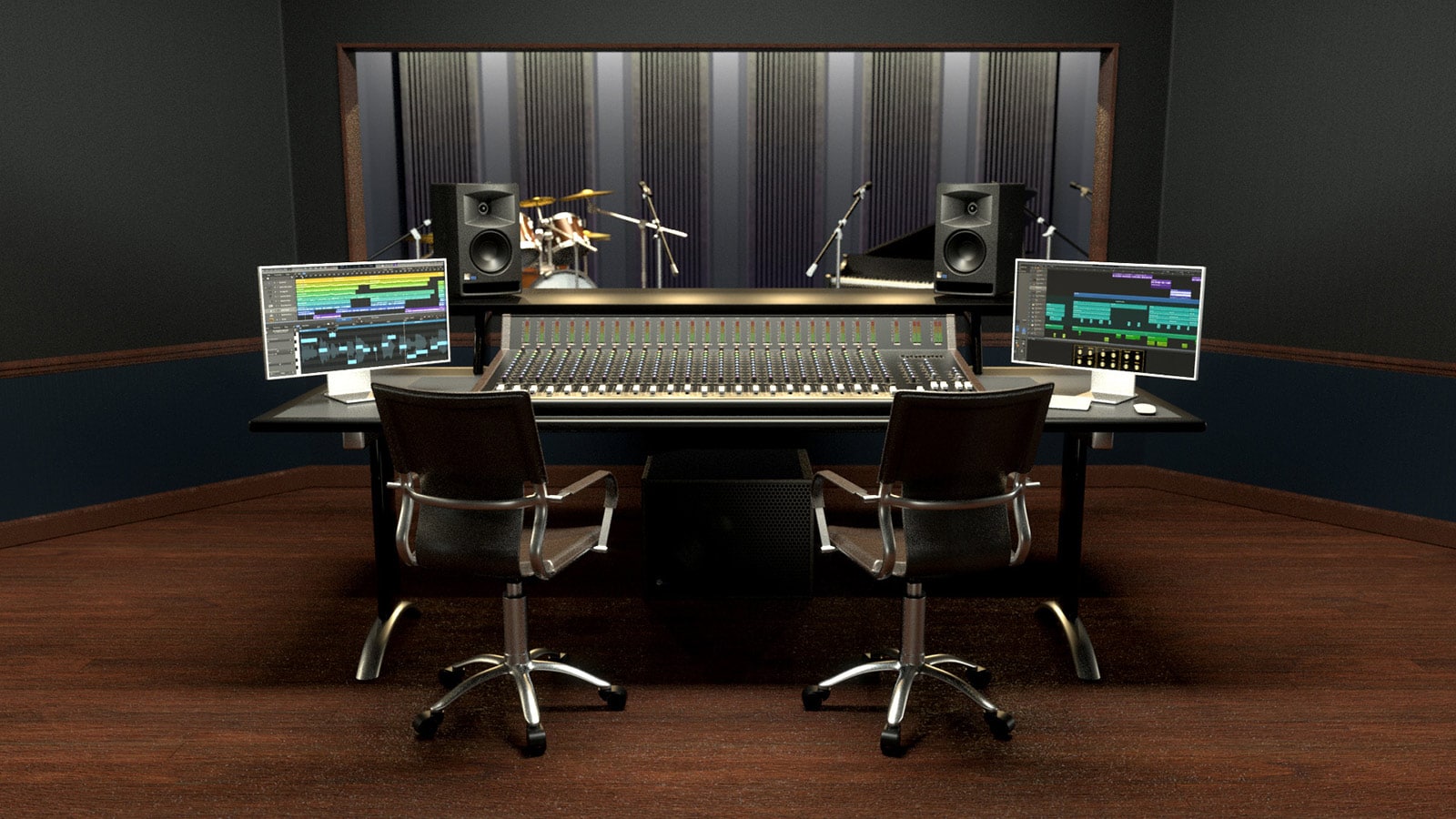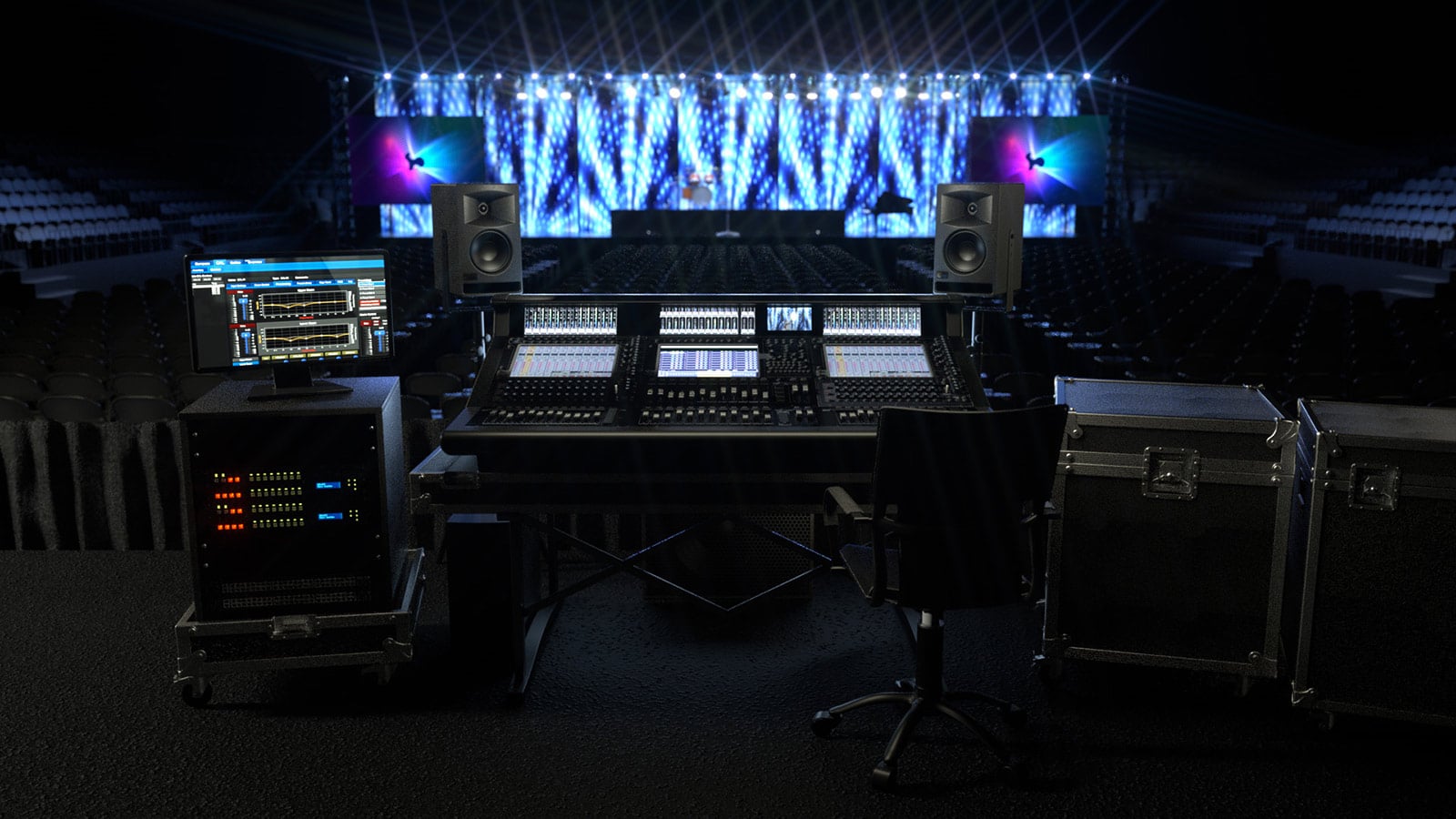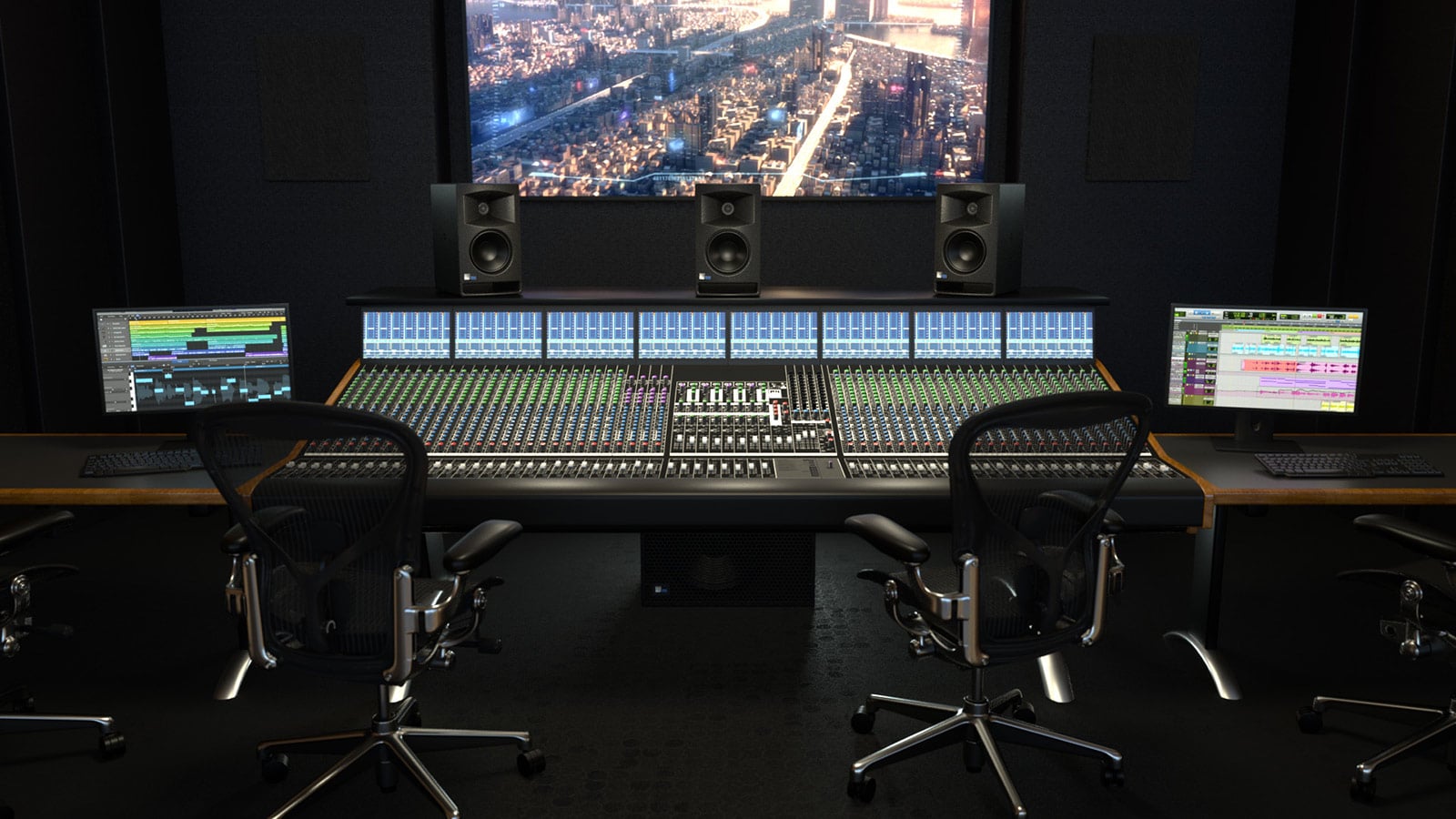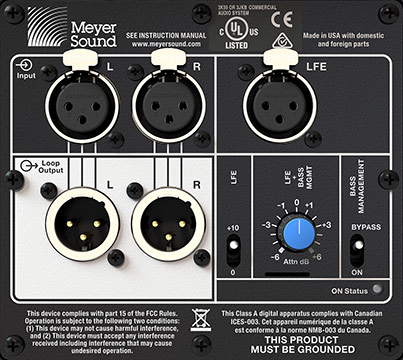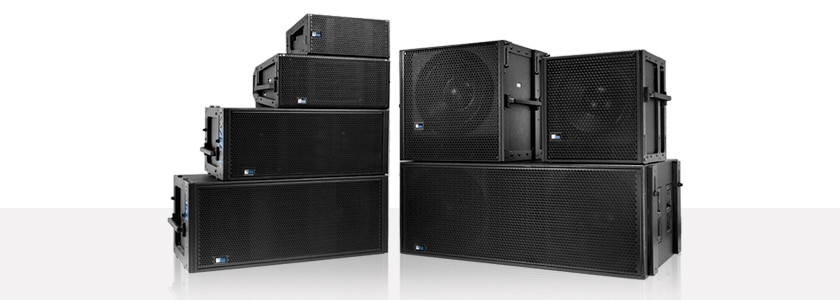
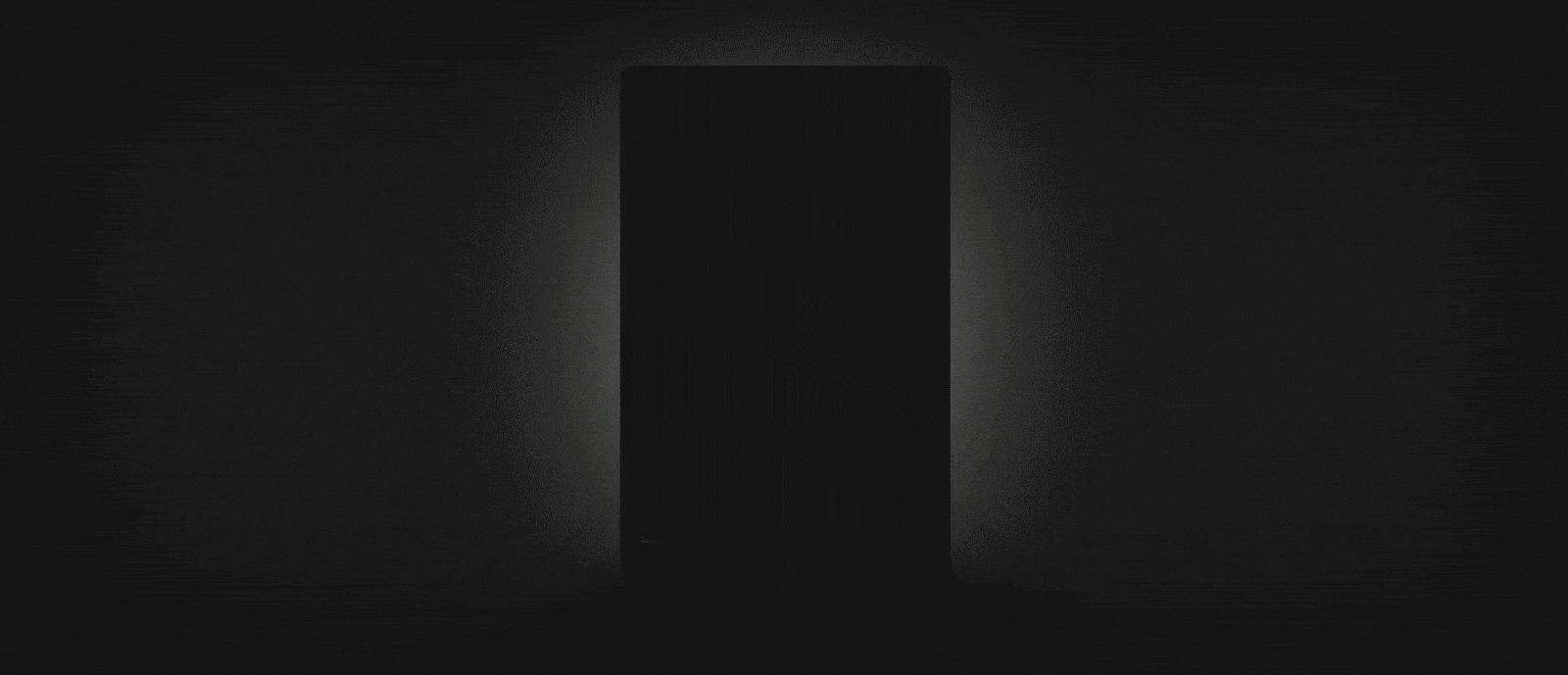
Pure, honest sound?
Precisely.
Your studio monitors are your single source of truth and the most critical investment you’ll make in your craft. Choose Amie, and choose the power to express yourself with unrivaled clarity and transparency. No coloration, no compromise. Just your inspiration, unfiltered.
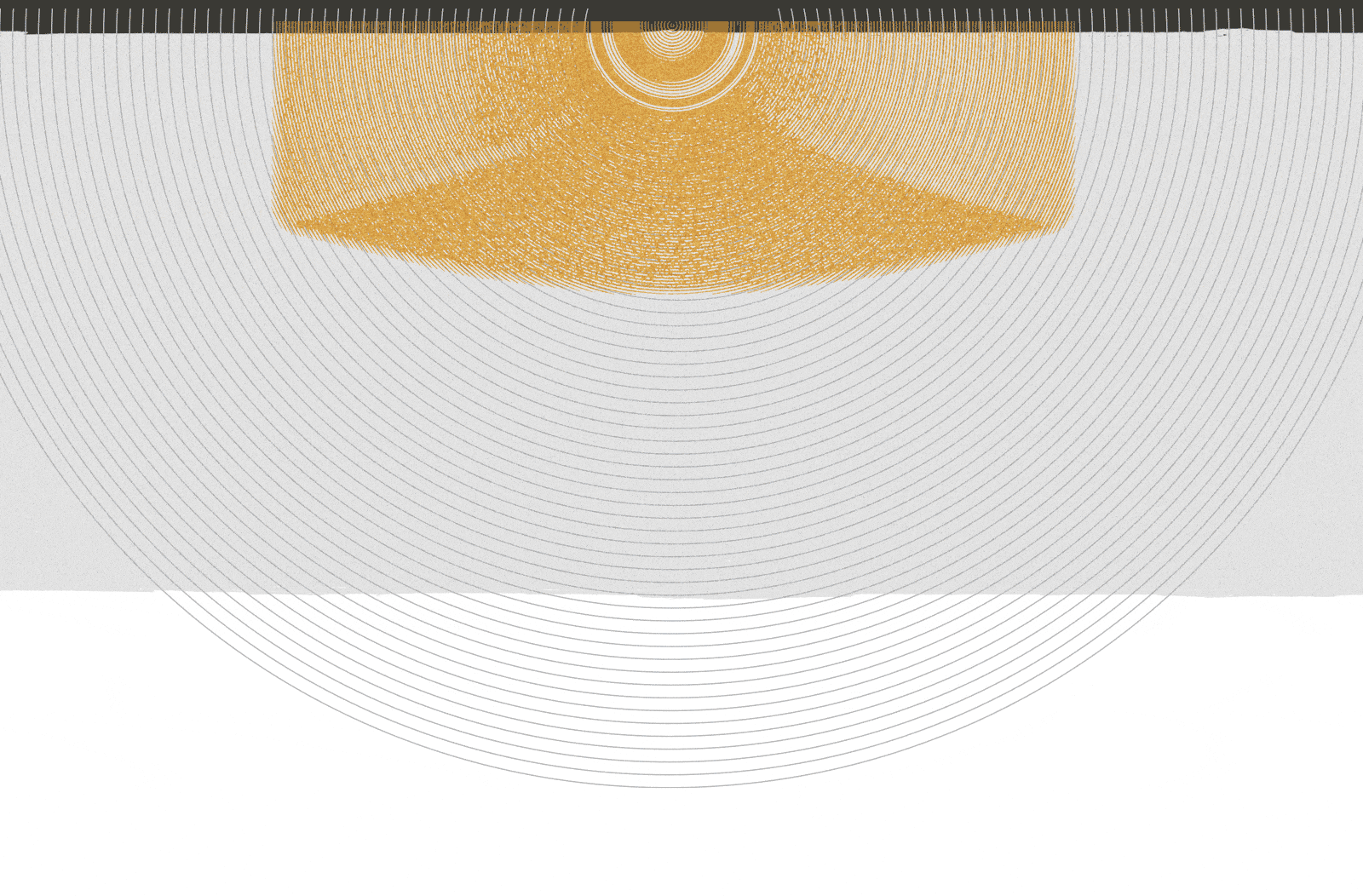
Pump up the volume,
not the noise.
From a whisper to a roar, mix with confidence at any volume level. Amie monitors provide more headroom than any reference monitors in their class. Whether you’re creating analog or digital content, you’ll always experience clean, clear sound that’s free of distortion and noise – no matter how hard you push your speakers.
Hear it here, there,
and everywhere.
Amie speakers integrate effortlessly into any studio space. They’re acoustically optimized to deliver pure sonic perfection, right out of the box – no DSP needed. Bring them wherever you mix, knowing they’ll deliver consistent performance anywhere.
Expandable,
not expendable.
Amie Systems are designed to grow with your craft. So go ahead, expand from stereo to surround. You’ll never have to update or calibrate your monitors, and you can count on consistent power and performance.
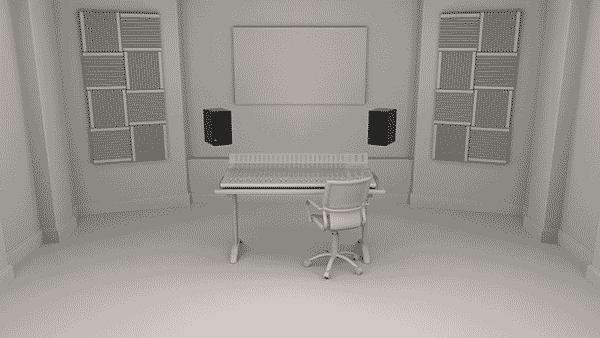
All from the last name in sound.
Meyer Sound loudspeakers support the world's most demanding customers and venues, including:
Learn more about
Amie Systems
Grow your craft with the Amie System. Sound reproduction that is true, accurate and consistent. Our sales team would be glad to answer any questions you may have.
Meet the Amie Systems
Amie Precision Monitor
The compact, self-powered Amie Precision Studio Monitor is engineered to excel in critical audio workflows requiring accurate mix translation to a variety of environments. Amie flawlessly reproduces source material at any volume level, and exhibits a remarkable power-to- size ratio as well as true phase linearity for ultra-precise spatial imaging.
Amie-Sub Compact Subwoofer
The linear, self-powered Amie‑Sub subwoofer seamlessly complements Amie precision studio monitors to create full-range, multichannel systems with extended response down to 22 Hz. Amie-Sub delivers clean, punchy transients and superior phase coherence, thanks to its single 15-inch, low distortion, long-excursion cone driver; ported bass reflex cabinet; and Class D power amplifier with a suite of signal processing including crossover management, driver protection, and frequency and phase correction.
An Amie System for Any Application
Amie systems deliver unparalleled clarity, imaging and depth in a broad range of scenarios from stereo to 7.1 and beyond, from music recording and mixing, to mastering, broadcast, and immersive audio applications. The Amie Precision Studio Monitor’s superior accuracy and high SPL capability make it ideal for translating the linearity and accuracy of large Meyer Sound systems at FOH positions in live sound. Amie systems comply with international standards and recommendations including ITU-R BS.775-3 and SMPTE 202M-1998.
Integration Input Modules
Amie System Examples
7.1 Amie System
| 5.1 Amie System
| 2.1 Amie System
|
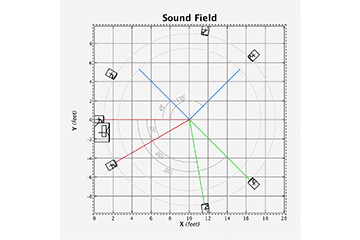 | 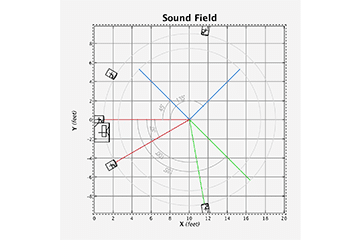 | 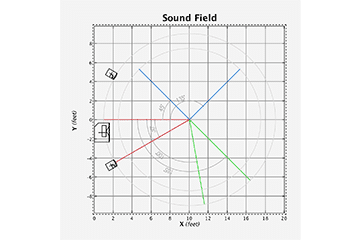 |
7.1 Amie System
|  |
5.1 Amie System
|  |
2.1 Amie System
|  |
The Self-Powered Advantage
Meyer Sound has been pioneering self-powered loudspeakers for professional installations and touring since 1995. We’ve committed to self-powered systems because we know they deliver unrivaled clarity, reliable performance, value, and ease of use.
If you’ve been thinking about investing in a self-powered system, you’ve come to the right place.
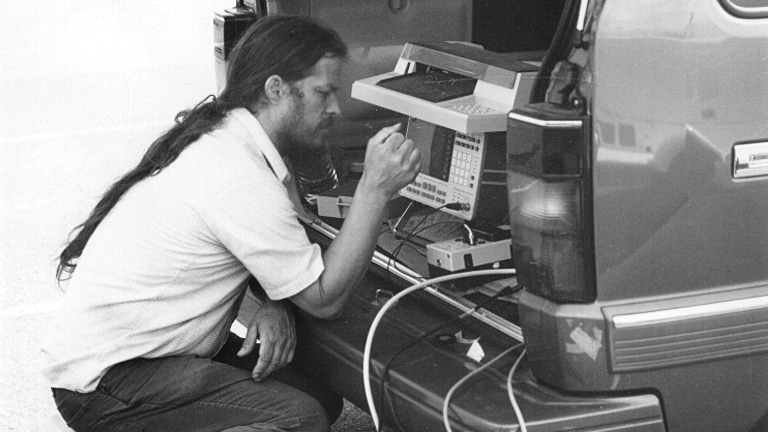
First, a Little History...
The story of self-powered loudspeakers is in many ways the story of Meyer Sound itself.
In the 1970s, sound reinforcement technology was inconsistent science at best, and at worst, led to show-ending failures. A young John Meyer, designing loudspeakers for San Francisco’s McCune Sound Service, wanted to bring quality and reliability to sound systems, and he knew the answer lay in self-powered loudspeakers. In 1979 Meyer founded his own speaker company; early Meyer Sound innovations include the iconic HD-1 self-powered studio monitor launched in 1989.
Today Meyer Sound offers a full range of self-powered sound reinforcement products. Meyer Sound systems can be found on tour with artists ranging from Ed Sheeran to Metallica, on Broadway and London’s West End, and in performance venues from the San Francisco Opera to the Vienna Philharmonic not to mention sports stadiums, cruise ships, and houses of worship around the world.
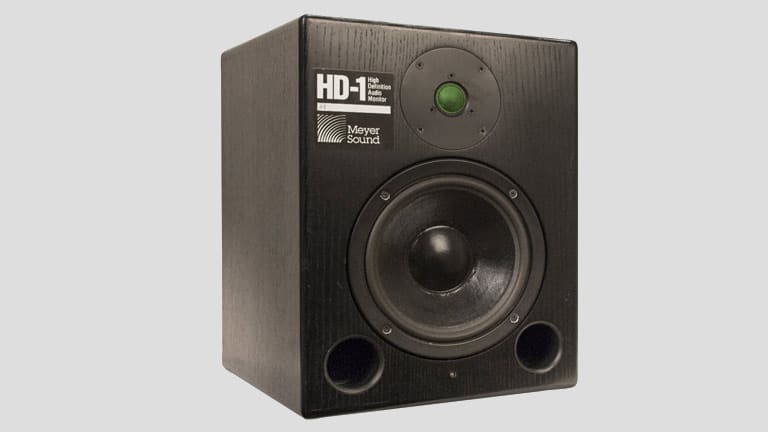
Why Self-Powered?
Self-powered loudspeakers offer several advantages over their passive counterparts when it comes to fidelity, reliability, and simplicity. The great part is, you’ll start to reap the benefits of a self-powered system before you even power up.
Ease of deployment: System set-up is so much easier when you have fewer components and fewer cables to worry about being miswired. Since self-powered loudspeakers incorporate amplification, you’ll never have to deal with matching speakers to amplifiers or connecting components. You don’t have to worry about calibration of gain and crossover setting which means more time focusing on the show. Eliminating amp racks doesn’t just streamline system deployment, it streamlines your inventory whether you’re a rental house or a road warrior. And when you consider that the average amp rack weighs nearly 300 pounds and takes up four feet of truck space, the efficiencies get even clearer. Let alone when you want to fly the amplifier racks to get closer to the speakers, often requiring more rigging points and more motors.
Predictable, reliable operation: Internal amplification is closely matched to drivers. Because individual components have been optimized during manufacturing, you can expect consistent sound from show to show. Built-in, factory-optimized protection circuitry provides extra assurance without degrading signal quality. And, when you have less equipment, you have less risk of failure.
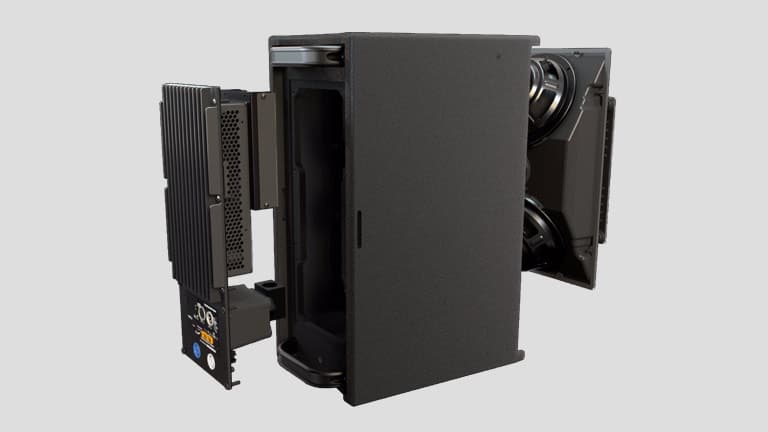
Better frequency and phase response: Because self-powered loudspeakers incorporate sophisticated processing, they are calibrated to exhibit optimal response curves in key performance parameters. Active crossovers are more precise, sophisticated designs, and bi-amped systems are time aligned, eliminating phase issues. The result? Accurate sound throughout the speaker’s range, at any volume level.
Unparalleled clarity: In powered monitors, internal amplifiers are precision-matched to drivers, delivering optimal power at all times for cleaner sound. And because amps are built into loudspeaker cabinets, there’s no need for long lengths of connecting cable, which can become prone to distortion and signal loss.
Tighter transients: Since self-powered loudspeakers have very short internal cables, amps inside can more effectively dampen driver mechanical motion, which leads to better sonic accuracy and tighter, crisper transients. (And, there’s none of the loss in levels and signal quality inherent over long cable distances.)
Certified Safe: Nothing matters more than the safety of your staff and customers. Because self-powered loudspeakers incorporate amplification, they must undergo rigorous testing by Underwriters Laboratories and other international organizations to ensure they operate safely and guard against the risk of fire, electric shock, and inadequate structural design. Enjoy peace of mind knowing Meyer Sound powered products are certified by FCC, UL, CSA, CE, and CEE the most stringent agencies in the business.
The Problems with Passive
What about passive loudspeakers? At first glance, passive systems may seem like a bargain. But we already know that passive systems require more components and accessories than powered systems. Sonically, they exhibit potential for signal loss over distances, and it is very hard to ensure consistent, optimal sound and volume as amplifiers have many variables to consider when being matched to loudspeakers, such as cable lengths and gauge as well as the number of speakers connected to the amplifier.
Passive systems are often touted as easy to service. But because powered loudspeakers are so complex to design and build, self-powered loudspeakers usually represent the top innovations from leading manufacturers. Better quality translates to better reliability, which means fewer maintenance issues in the long run.
At face value, passive systems might seem less expensive and easier to maintain. But once you start adding in amps, cables, and other components not to mention increased transport and labor costs you’ll find that those savings just don’t add up to a better value.
Step Up to a Self-Powered System
Once you recognize all of the advantages inherent in self-powered loudspeaker systems, it’s easy to understand why the world’s top venues and productions rely on them to deliver consistently stunning sound.


